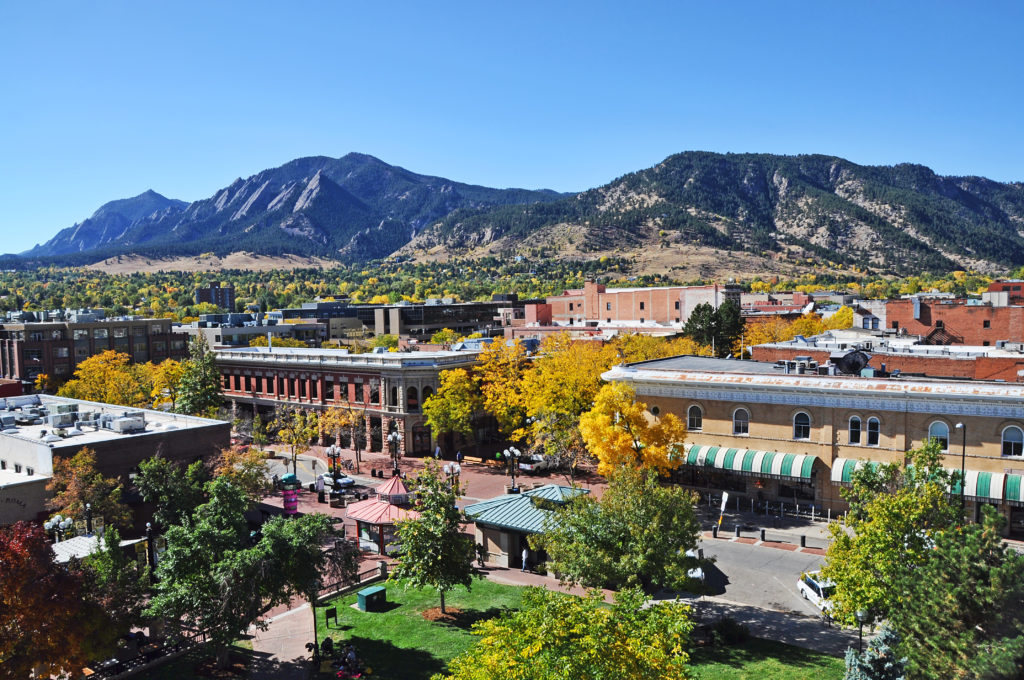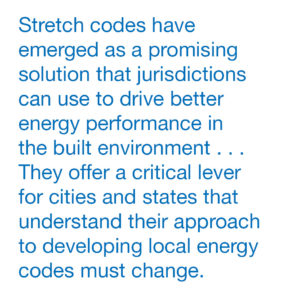This week, thousands of building industry professionals will converge at Greenbuild 2017 to share their excitement and progress advancing green buildings. While the number of green buildings—energy-efficient, zero energy, LEED and ENERGY STAR-certified, etc.—has grown dramatically over the last decade, the pace of construction still falls far short of what is needed to make a meaningful difference in reducing carbon emissions from the U.S. building stock. Buildings today are responsible for 40% of the total energy use and carbon emissions in the U.S.

For the majority of buildings that are built outside of green building circles, where there is little incentive and guidance for constructing energy-efficient, sustainable buildings, the main driver of energy performance is the local building energy code. While national model energy codes have advanced in recent years, many places mandating previous versions fall short on the best practices that the market has to offer. Still others lack effective compliance resources.
Increasingly, states and cities are looking to reduce greenhouse gas emissions from the building sector and accelerate building energy efficiency. To date, hundreds of cities, counties, and states across the country have adopted policy goals to reduce carbon emissions from the building sector to meet the 2030 Challenge, which aims to make all new buildings and major renovations carbon-neutral by 2030, or the COP21 Paris Accord. For these local jurisdictions and others that have made formal commitments and adopted policies to achieve zero emissions from the building sector, more aggressive building policies are needed than what’s defined in national building code requirements.
 Stretch codes have emerged as a promising solution that jurisdictions can use to drive better energy performance in the built environment through energy codes and set a long term vision for efficiency stringency in buildings further into the future. Stretch codes offer a critical lever for cities and states that understand their approach to developing local energy codes must change. They accelerate the pace of national code development through incremental improvements every three years by setting the vision for greater energy savings in buildings and plan to realize that vision over a series of code development cycles. They go above and beyond national building energy codes and give builders guidance to achieve far greater energy savings and put new construction on the path to becoming ultra-low energy or even zero energy projects.
Stretch codes have emerged as a promising solution that jurisdictions can use to drive better energy performance in the built environment through energy codes and set a long term vision for efficiency stringency in buildings further into the future. Stretch codes offer a critical lever for cities and states that understand their approach to developing local energy codes must change. They accelerate the pace of national code development through incremental improvements every three years by setting the vision for greater energy savings in buildings and plan to realize that vision over a series of code development cycles. They go above and beyond national building energy codes and give builders guidance to achieve far greater energy savings and put new construction on the path to becoming ultra-low energy or even zero energy projects.
This week, New Buildings Institute released model stretch energy code measures that target 20% better efficiency than current national building energy codes. The new 20% Stretch Code Provisions offer jurisdictions a set of energy-saving building strategies that cover design aspects such as envelope, mechanical, water heating, lighting and plug loads.
The 20% Stretch Code Provisions is one of a set of building codes being developed by NBI that provide increasing stringency. They give cities and states the basis for maximizing energy savings in both commercial and residential projects over the course of several code development cycles, allowing the market to prepare for and gain experience with new efficiency practices and technologies. Cities and states can choose to adopt the entire stretch code or parts of it through their existing code review process. It generally takes legislative action, or state or local code council approval for new building codes to be adopted. State and local governments can also make stretch code adoption voluntary, and work with utilities to incentivize builders to follow the code.
Several cities and states have already adopted similar stretch codes, such as the states of Massachusetts and New York, and the cities of Boulder, CO, and Santa Monica and Palo Alto, CA. In Boston, where Greenbuild is being held this year, the city participates in Massachusetts’ Green Communities program — a statewide initiative that provides technical and financial assistance to cities that commit to following the state’s stretch code for new construction. Massachusetts was one of the first states in the U.S. to implement a stretch code, and to date, more than 180 Massachusetts cities and towns, including Boston, are participating in the program.
As more cities and states begin to adopt stretch codes, there will be faster advancement in reducing greenhouse gas emissions from the building sector, resulting in greater energy savings and a healthier environment for all.
by Mark Frankel, Technical Director
A summary of the new 20% Model Stretch Code can be accessed here. For the complete code language and further information and support for jurisdictions considering a stretch code, contact Webly Bowles at [email protected].
